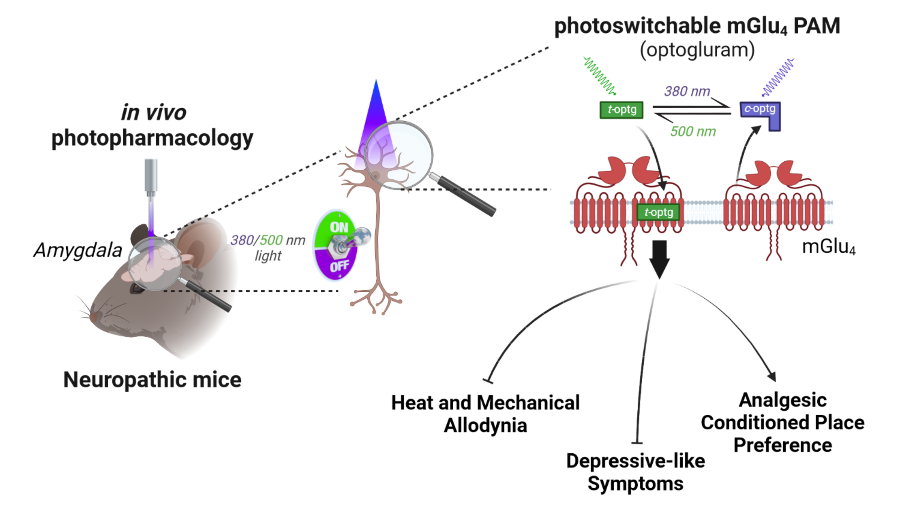SHEDDING LIGHT ON A NEUROMODULATORY MECHANISM OF NEUROPATHIC PAI
In a study recently published in the journal Pharmacological research, the team led by Cyril Goudet and Guillaume Lebon focused on understanding the neuropharmacological and molecular mechanisms that control neuropathic pain.
Neuropathic pain is a common and intractable problem that affects life quality of up to 10% of individuals in the US and Europe, and is largely refractory to current pharmacotherapies. Indeed, only half of patients suffering from chronic pain receive adequate pain relief using the current treatments. Moreover, these medications are often associated with adverse side effects, such as respiratory depression and addiction for the conventional analgesics targeting µ-opioid receptors, highlighting the clear need for new and improved pharmacologic treatments.
The study is focused on a recently identified neuromodulatory system associated to the metabotropic glutamate receptor mGlu4 in the amygdala, a brain region implicated in both pain processing and controlling emotional states, in a murine model of neuropathic pain. To this end, the authors used photopharmacology that enable precise and reversible control of the activity of endogenous amygdala mGlu4 by light in freely behaving mice. To do this, they used a photoswitchable positive allosteric modulator of the mGlu4 receptor, optogluram, which was developed in collaboration with Amadeu Llebaria’s team at IQAC in Barcelona. The authors demonstrated that sensory and emotional impairments established for long periods can be rapidly alleviated by photopharmacological manipulation of this specific modulatory system in the amygdala, bypassing central sensitization processes. Notably, this study is the first to combine photopharmacology and analgesic conditioned place preference, which allowed to clearly highlighting the analgesic potential of amygdala mGlu4 activation without the involvement of external noxious stimuli, suggesting them as a potential therapeutic target to counteract pathological pain associated to neuropathy.

Study conducted in a mouse model of peripheral mononeuropathy. To perform in vivo photopharmacology experiments, hybrid optical/fluidic cannulas were stereotaxically implanted on the amygdala to locally deliver both light and optogluram, a photoswitchable mGlu4 PAM. This allowed precise spatio-temporal control of mGlu4 neuronal activity. The study elucidated the ability of the mGlu4 receptor in the amygdala to relieve neuropathic pain.


